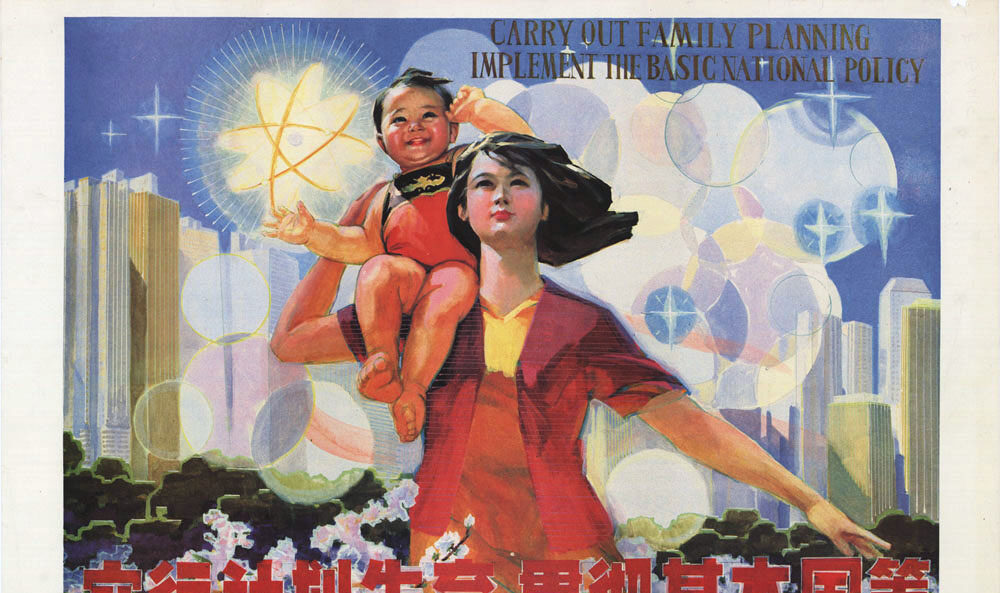China’s Biological Clock
Xi Jinping’s three-child policy is proving to be too little, too late.

China wants to turn back its biological clock. The Communist Party’s one-child policy, a program which began before I was born and was phased out just two U.S. presidential election cycles ago, has since been replaced with a three-child policy to combat dangerously low birth rates and an aging population. In the years since it introduced the new objective, the CCP has used a variety of tactics—from financial incentives and party lectures on “family values” to phone calls from CCP officials—to attempt to convince women to become wives, wives to become mothers, and mothers of one to become mothers of two or three.
Chinese women are getting fed up with it, apparently. They are too busy with their careers and caring for elderly relatives, some told the Wall Street Journal this week, and the government’s cash incentives for having a baby are too small to outweigh a salaried job.
“Having had one child, I think I’ve done my duty,” one woman, Feng Chenchen, told the Journal. Feng said she would consider having a second child for 300,000 yuan, the equivalent of $41,000. That’s a good bit more than the $80 to $500 per month Chinese women have been offered by the party to procreate.
In other words, all the ham-fisted policies of a totalitarian regime are failing in the face of an economic crisis, and a feminist milieu, caused in no small part by the one-child policy. So far, the new measures have had the opposite of their intended effect: With the exception of a brief increase in 2016, China’s total birth rate has steadily fallen since the end of the one-child policy. It shrunk by more than 40 percent in the last five years. That low birthrate took the pro-natalist question beyond mere talk of labor markets when, for the first time since the Great Famine of 1960-61, the Chinese population hit a net loss in 2022. Early numbers for 2023, which have since been deleted by the CCP, depict an even greater drop in the past year.
These birth rates alone are less interesting than their causes, which include low marriage rates, high divorce rates, and a large, aging population that now disproportionately burdens the numeric few in the younger generations. It’s a story that sounds all too familiar in the United States, where total fertility hit a record low in 2020 and has yet to substantially recover. Like the United States, too, China’s low marriage rates are primarily driven by women. A 2021 survey of 3,000 Chinese aged 18 to 26 years found more than 40 percent of women in urban areas did not plan to marry, while only 25 percent of men in urban areas held the same.
There are obvious errors in China’s approach, such as kitschy messaging and clumsy policy mechanisms. The whiplash alone is absurd: We did not need to see it happening in China to guess that a turn from mandatory abortions to mandatory pregnancy would make a feminist out of too many women, who have been made to feel that their fertility is merely a pawn in a global game of chess. Still, the CCP’s urgency, while misguided, is clearly not misplaced.
Subscribe Today
Get daily emails in your inbox
The real cause of China’s demographic failure is not that the party has attempted to use the power of the state to shape the culture, albeit poorly. The problem is that such changes take generations to effect, and were started too late. This is a good lesson for Americans, who have contented themselves that low birth rates either don’t matter or that they may be fixed in the four years their party is in power: Demography is a long, long game. When it comes to birth rates, China is about to learn whether there is a point of no return.
We would be wise to remember this when it comes to our own national fertility crisis which, though less dire than that of China, is only a generation or two behind. The conservative tendency is to center the fertility discourse on whether state power ought to play a significant role in addressing the problem, as Lyman Stone of the Institute for Family Studies and Professor Catherine Pakaluk of Catholic University of America recently demonstrated in a friendly social media debate. Is the decline of U.S. fertility a policy problem or a culture problem? Pakaluk, whose book on the subject is set to release this spring, argues that the cultural influences of religion and large-family peers are key to reversing the United States’s downtrending birth rates, citing Israel as her capstone example. Stone, meanwhile, countered that demography does not change significantly at the large family level: The biggest difference would be made if two-child mothers became three-child mothers, a needle which still seems most predictably moved by policy.
These are fine debates to have, and Stone and Pakaluk are both the good sort to have them, but perhaps the better answer is simply that we need both. What China teaches us is not that child tax credits are never helpful, nor that the culture a woman is raised in has no affect on her fertility. It teaches us that both culture and state may be good and useful husbandmen, both may encourage a flourishing, fertile populace when used with appropriate nuance, and both will be needed to guide policy makers who hope to reverse the United States’ demographic trend before it reaches the levels now seen in Beijing. As China’s last half decade suggests, neither money nor culture can do much in a hurry.